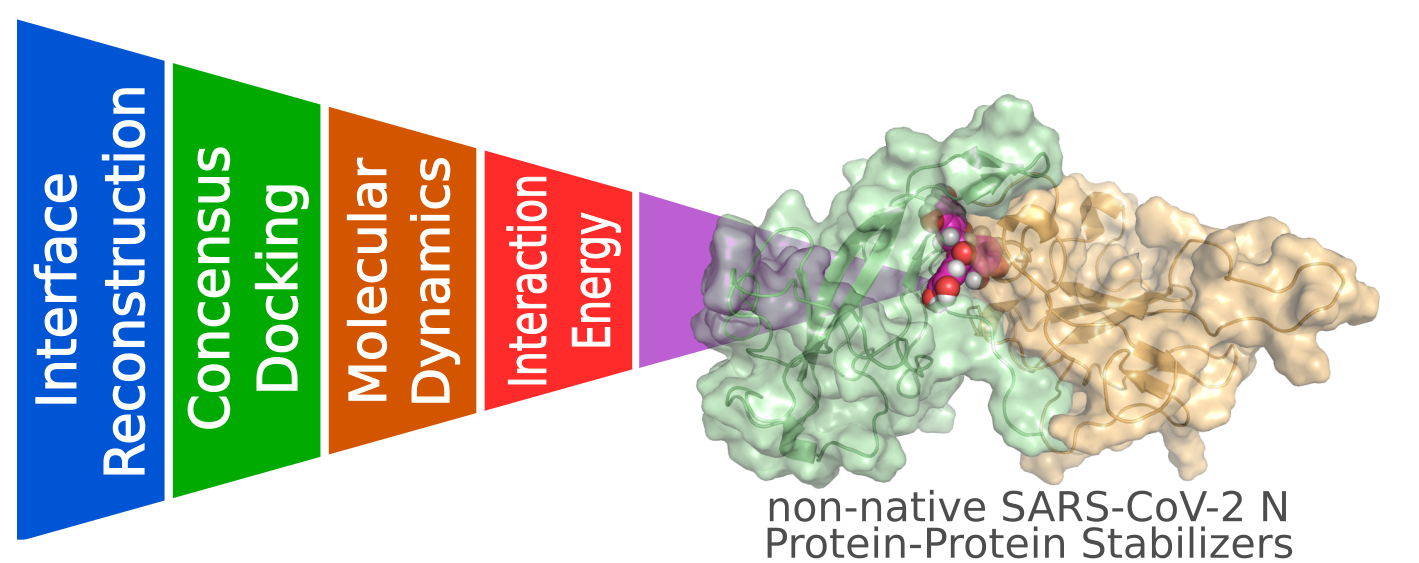The outbreak of COVID-19, the disease caused by SARS-CoV-2, continues to affect millions of people around the world. The absence of a globally distributed effective treatment makes the exploration of new mechanisms of action a key step to address this situation. Stabilization of non-native Protein-Protein Interactions (PPIs) of the nucleocapsid protein of MERS-CoV has been reported as a valid strategy to inhibit viral replication. In this study, the applicability of this unexplored mechanism of action against SARS-CoV-2 is analyzed. During our research, we were able to find three inducible interfaces of SARS-CoV-2 N protein NTD, compare them to the previously reported MERS-CoV stabilized dimers, and identify those residues that are responsible for their formation. A drug discovery protocol implemented consisting of docking, molecular dynamics and MM-GBSA enabled us to find several compounds that might be able to exploit this mechanism of action. In addition, a common catechin skeleton was found among many of these molecules, which might be useful for further drug design. We consider that our findings could motivate future research in the fields of drug discovery and design towards the exploitation of this previously unexplored mechanism of action against COVID-19.

